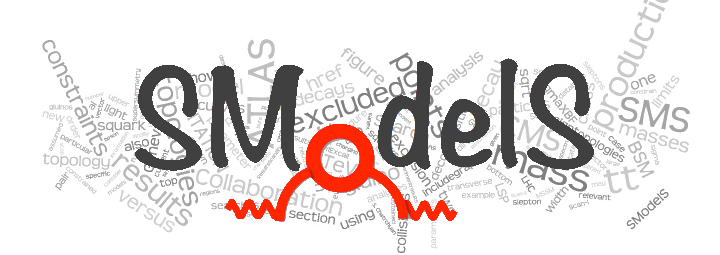A tool for interpreting simplified-model results from the LHC
Project description

SModelS v2
SModelS – A tool for interpreting simplified-model results from the LHC.
SModelS is an automatic, public tool for interpreting simplified-model results from the LHC. It is based on a general procedure to decompose Beyond the Standard Model (BSM) collider signatures presenting a Z2 symmetry into Simplified Model Spectrum (SMS) topologies. Our method provides a way to cast BSM predictions for the LHC in a model independent framework, which can be directly confronted with the relevant experimental constraints.
Installation
For instructions on how to install SModelS, see the section Installation of the SModelS online manual.
Running SModelS
SModelS provides a command-line tool (runSModelS.py) for the basic functionalities, which can be executed as:
./runSModelS.py -p <parameter file> -f <input file or directory> -o <output directory>
For help instructions:
./runSModelS.py -h
An example file on how to call the SModelS libraries from your own Python code can be found in Example.py.
Detailed explanations on how to use SModelS, including explanations of the output, can be found in the section Using SModelS of the SModelS online manual.
A few example input files are provided in the inputFiles folder and can be used to test runSModelS.py.
Citation
If you use this software please cite both the SModelS v1.1 and v1.2 manuals, the original SModelS publication, as well as the programs it makes use of (pythia8/pythia6, NLL-fast and pyslha). If you use specifically the long-lived particles implementation, please cite also this paper. For the Run2 database, cite the v1.2 manual and the databaseUpdate paper.
For your convenience, the relevant citations are provided in bibtex format in references.bib.
For citing the experimental analyses in the database, you can use smodels-database/database.bib.
Project details
Release history Release notifications | RSS feed
Download files
Download the file for your platform. If you're not sure which to choose, learn more about installing packages.
















